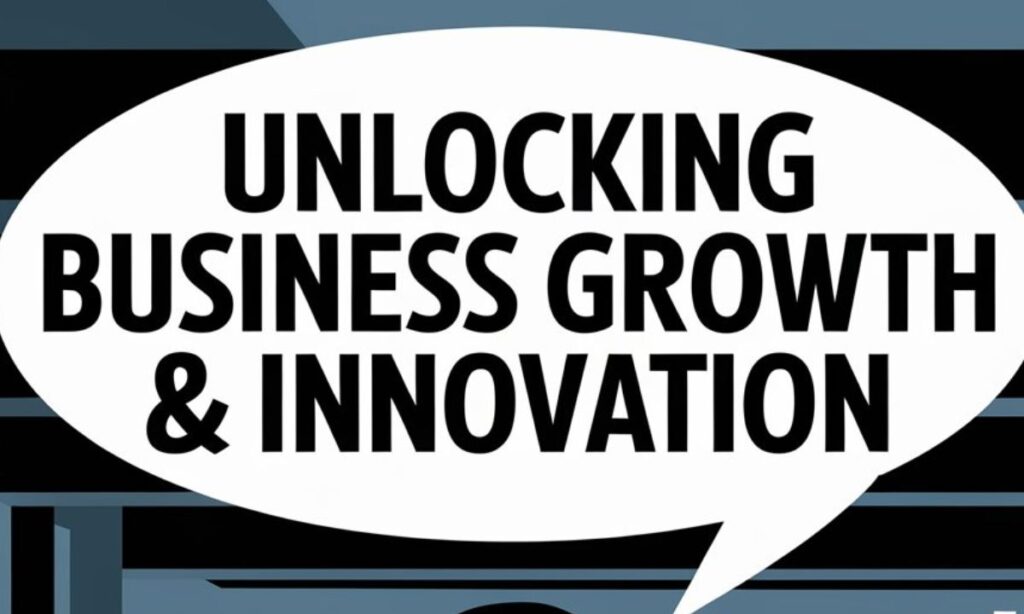In today’s rapidly changing business environment, organizations must adapt and innovate to remain competitive. Intrapreneurship—the practice of fostering entrepreneurial behavior within an organization—has emerged as a powerful strategy for driving sustainable growth.
At the heart of this movement is the role of business consultants like Pedrovazpaulo, who specialize in cultivating a culture of intrapreneurship. This article explores the challenges, strategies, and benefits of intrapreneurship, showcasing how it can transform organizations.
The Challenge: Bridging the Gap Between Ideas and Implementation
Organizations often struggle to translate innovative ideas into actionable projects. This gap can stifle creativity and prevent businesses from fully realizing their potential.
- Idea Generation vs. Execution: Employees may have brilliant ideas, but without the necessary support and resources, these ideas remain just that—ideas. This disconnect can lead to frustration and disengagement among staff.
- Cultural Barriers: A corporate culture that discourages risk-taking can hinder innovation. Employees may fear failure, leading to a lack of initiative in pursuing innovative projects.
- Resource Allocation: Many organizations face challenges in allocating resources effectively to support new initiatives. This can result in a lack of funding, time, or personnel dedicated to pursuing intrapreneurial projects.
Overcoming the Challenges
To address these challenges, organizations can implement several key strategies:
- Encouraging Open Communication: Fostering an environment where employees feel comfortable sharing their ideas without fear of criticism is crucial. Open forums and regular brainstorming sessions can help facilitate this communication.
- Providing Adequate Resources: Organizations must allocate sufficient resources—both financial and human—to support innovative projects. This includes investing in training and development to equip employees with the necessary skills.
- Leadership Support: Strong leadership is essential for bridging the gap between ideas and execution. Leaders should actively promote intrapreneurial initiatives and provide guidance and mentorship to employees.
| Challenge | Description | Impact on Innovation |
| Idea Generation vs. Execution | Difficulty turning ideas into actionable plans | Stifled creativity |
| Cultural Barriers | Fear of failure discourages risk-taking | Reduced employee engagement |
| Resource Allocation | Insufficient resources for new initiatives | Hindered project development |
How a Pedrovazpaulo Business Consultant Fosters Intrapreneurship
1. Creating an Agile Corporate Culture
Pedrovazpaulo emphasizes the importance of an agile corporate culture that encourages experimentation and flexibility. This involves:
- Empowering Employees: Consultants work with organizations to empower employees by providing them with the autonomy to explore their ideas. This fosters a sense of ownership and accountability.
- Fostering Collaboration: Encouraging teamwork across departments can enhance the flow of ideas and resources, facilitating the development of innovative solutions.
2. Implementing Workplace Innovation Programs

To support intrapreneurship, Pedrovazpaulo helps organizations implement workplace innovation programs. These programs include:
- Training and Development: Offering training sessions that focus on creativity, problem-solving, and innovation techniques equips employees with the skills needed to pursue intrapreneurial projects.
- Mentorship Opportunities: Connecting employees with mentors can guide them through the innovation process, providing valuable insights and feedback.
- Innovation Labs: Establishing dedicated spaces where employees can experiment with their ideas and collaborate with others can significantly enhance creativity and innovation.
3. Encouraging Employee-Driven Innovation
Employee-driven innovation is crucial for fostering a culture of intrapreneurship. Pedrovazpaulo promotes initiatives that enable employees to contribute ideas and solutions actively.
- Idea Incubation: Establishing platforms where employees can pitch ideas and receive constructive feedback encourages participation and investment in the innovation process.
- Recognition and Rewards: Acknowledging and rewarding innovative ideas can motivate employees to take initiative and pursue their projects with enthusiasm.
- Cross-Functional Teams: Creating teams composed of members from various departments can lead to diverse perspectives and innovative solutions.
| Strategy | Description | Expected Outcome |
| Agile Corporate Culture | Encouraging flexibility and experimentation | Increased innovation |
| Workplace Innovation Programs | Providing training and mentorship opportunities | Enhanced employee skills |
| Employee-Driven Innovation | Creating platforms for idea sharing | Greater participation |
Real-World Examples of Intrapreneurship in Action
1. Google’s 20% Time
One of the most famous examples of intrapreneurship is Google’s 20% Time policy, which allows employees to spend 20% of their workweek on projects that interest them.
This initiative has led to the creation of successful products like Gmail and Google News, illustrating how giving employees the freedom to innovate can yield significant results.
2. 3M’s Innovation Culture
3M is known for its commitment to fostering an innovative culture. The company encourages employees to dedicate 15% of their time to developing their projects.
This has resulted in the creation of iconic products like Post-it Notes, showcasing the effectiveness of intrapreneurship in driving business growth.
3. Sony’s PlayStation Development
Sony’s development of the PlayStation is another example of successful intrapreneurship. The team behind the PlayStation was given the autonomy to explore their ideas and develop a product that revolutionized the gaming industry.
This success story highlights the potential of intrapreneurship to lead to groundbreaking innovations.
4. Lockheed Martin’s Skunk Works
Lockheed Martin’s Skunk Works is a prime example of intrapreneurship in action. This division was created to develop advanced aircraft in a highly innovative environment.
The U-2 and SR-71 Blackbird are products of this initiative, demonstrating how intrapreneurial efforts can lead to significant technological advancements.
5. Adobe’s Kickbox Innovation Program
Adobe has implemented the Kickbox program, which equips employees with a toolkit to develop their innovative ideas. This program includes resources such as funding, mentorship, and time off to work on projects, fostering a culture of creativity and innovation.
| Company | Intrapreneurship Initiative | Outcome |
| 20% Time policy | Creation of Gmail, Google News | |
| 3M | 15% Innovation Time | Development of Post-it Notes |
| Sony | Autonomous PlayStation development | Revolutionized gaming industry |
| Lockheed Martin | Skunk Works | Development of U-2, SR-71 |
| Adobe | Kickbox Innovation Program | Empowering employee innovation |
The Benefits of Cultivating Intrapreneurship
1. Enhanced Innovation and Agility
Cultivating a culture of intrapreneurship leads to enhanced innovation and agility within organizations.
- Faster Adaptation: Intrapreneurial teams can respond quickly to market changes, allowing organizations to stay ahead of competitors.
- Continuous Improvement: An intrapreneurial mindset promotes ongoing experimentation and learning, resulting in continuous improvement across all levels of the organization.
2. Increased Employee Engagement and Retention
Intrapreneurship fosters a more engaged workforce.
- Ownership and Accountability: When employees feel empowered to take initiative, they develop a sense of ownership over their work, leading to higher job satisfaction.
- Attracting Talent: Organizations that promote innovation and intrapreneurship are more attractive to top talent, helping to build a stronger workforce.
3. Sustainable Business Growth
Ultimately, cultivating a culture of intrapreneurship can drive sustainable business growth.
- Diversification: Intrapreneurial projects often lead to new products and services, enabling organizations to diversify their offerings and mitigate risks.
- Long-term Success: By fostering innovation from within, organizations can create a sustainable competitive advantage that ensures long-term success.
4. Improved Problem-Solving Capabilities
Intrapreneurship enhances the organization’s ability to solve problems effectively.
- Diverse Perspectives: Intrapreneurial teams often comprise individuals from different backgrounds and departments, bringing varied perspectives to problem-solving.
- Proactive Approach: Intrapreneurs typically adopt a proactive approach to identifying and addressing challenges before they escalate, leading to more effective solutions.
5. Strengthened Brand Reputation
Organizations that cultivate intrapreneurship often enjoy a stronger brand reputation.
- Innovation Leadership: Being perceived as an innovative organization can enhance brand loyalty and attract customers who value creativity and progress.
- Positive Workplace Culture: A commitment to intrapreneurship reflects positively on the workplace culture, making it an appealing option for potential employees and clients alike.
| Benefit | Description | Impact on Organization |
| Enhanced Innovation | Encourages rapid adaptation and improvement | Increased market competitiveness |
| Employee Engagement | Fosters ownership and job satisfaction | Higher retention rates |
| Sustainable Growth | Leads to diversification and long-term success | Stronger competitive advantage |
| Improved Problem-Solving | Enhances capabilities to tackle challenges | More effective solutions |
| Strengthened Brand Reputation | Builds a positive public image | Attracts talent and customers |

Frequently Asked Questions (FAQs)
What is intrapreneurship?
Intrapreneurship refers to the practice of fostering entrepreneurial behavior within a company, allowing employees to innovate and drive new projects.
How can organizations become more intrapreneurial?
Organizations can promote intrapreneurship by creating an agile culture, providing resources for innovation, and encouraging employee participation.
What are the benefits of fostering intrapreneurship?
Benefits include enhanced innovation, increased employee engagement, and sustainable business growth.
How does Pedrovazpaulo support intrapreneurship?
Pedrovazpaulo helps organizations by implementing workplace innovation programs and fostering a culture of collaboration and empowerment.
Can intrapreneurship improve employee retention?
Yes, by giving employees a sense of ownership and encouraging their ideas, organizations can enhance job satisfaction and retention.
What is the difference between an intrapreneur and an entrepreneur?
An intrapreneur operates within an organization, leveraging its resources, while an entrepreneur starts and runs their own independent business.
What role does leadership play in promoting intrapreneurship?
Leadership plays a crucial role by setting the tone for innovation, providing support, and creating an environment that encourages risk-taking.
Conclusion
In summary, cultivating a culture of intrapreneurship is essential for organizations seeking to thrive in today’s dynamic business landscape.
Pedrovazpaulo Business Consultant plays a crucial role in guiding organizations through this transformative journey. By bridging the gap between ideas and implementation,
fostering an agile corporate culture, and promoting employee-driven innovation, businesses can unlock their full potential.
Embracing intrapreneurship not only enhances innovation and agility but also increases employee engagement and drives sustainable growth. As organizations navigate the complexities of modern business, fostering an intrapreneurial mindset will be key to their success.
Read more information https://verbvictories.online/
Visit my other websitehttps://techyspirtz.com/

I am David a content writer and seo expert with 2years experinces. I have Already BBC News Website.












